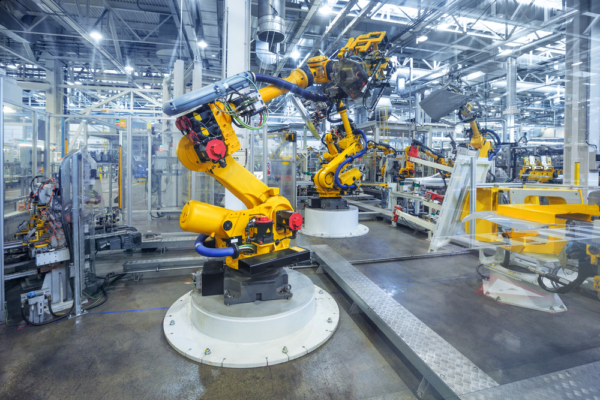
Automotive Manufacturing is becoming increasingly digital. Rather than relying on schematics and trying to engineer each component according to manufacturer’s specifications by hand, automotive companies now depend on simulation and predictive modeling to speed up production of essential parts and component assemblies. If the major manufacturers are using this technology, your company needs to as well. How does it work and what does it require? Let’s take a closer look at this Industry 4.0 innovation.
Simulation and Predictive Modeling: Enhancing Automotive Manufacturing Efficiency
Go From Prototype to Mass Production Faster
Manufacturing efficiency means getting more done with lower costs. The faster you can go from a part request to fulfilling the order, the more efficient your operations will be. Reaching mass production faster means that you can take on more orders and thus become a more profitable company. Digital manufacturing tools like virtual simulations and predictive modeling can greatly accelerate your product development process and get parts shipped faster. So, how does it work?
Rather than building a physical prototype and then comparing it to the manufacturer’s specifications, you’ll build a digital model of the component and test it virtually. The first half of this process is already quite easy, as manufacturing processes rely on 3D models. It’s the latter half of the equation that requires more careful examination to implement simulation and predictive modeling. A part model alone cannot be tested. You need more information to validate the design.
Linking Your Models to Complete Systems
Today, major automotive manufacturers use what’s known as the Model-Based Enterprise (MBE) manufacturing process. In this approach, the manufacturer develops a complete digital model of the vehicle they want to produce. Each component is an individual item in the model, with its own specifications and 3D design. As contracts are given out to suppliers, they can make adjustments to the components they’re authorized to work on. These adjustments are pushed to the main model and shared with everyone involved.
The Automotive Industry Action Group helps to coordinate and standardize MBE practices. Major manufacturers like Toyota and Ford are involved, as well as suppliers like Delphi. Working within an MBE environment means that you’ll be able to see how the components you build fit into the bigger picture. This also allows you to conduct more robust virtual testing without a physical prototype. It’s this feature that greatly improves manufacturing efficiency.
Traditional Testing Vs. Predictive Modeling
In traditional manufacturing, the supplier would build the part they’re asked to and perform tests to ensure its structural integrity. However, the supplier would be almost completely blind to how that part could affect other components or how it could be affected by problems in other systems. While you could simulate forces to determine if the component can withstand mechanical stress, those simulations will hardly reflect reality as force is distributed through the entire vehicle in a collision.
Predictive modeling, in contrast, tests the entire vehicle virtually. You can see what will happen to your component if a system fails, or if a collision occurs. Will a steering linkage break if the driver runs over a curb? You can test several speeds and curb heights to find out what scenarios lead to failure. Will that break affect other components? Are there potential clearance issues with other systems? Answering these questions before production leads to faster shipments.
Performing Simulations in the Cloud
Previously, you would have needed incredibly powerful servers on site to perform these kinds of simulations. They would take days to complete before data could be analyzed. Now, thanks to cloud computing, it’s possible to run these simulations quickly without any complex hardware. Cloud environments allow you to upload your parameters and powerful data centers do the rest. The company is billed only for the compute power it consumed for the test.
You can perform multiple simulations simultaneously as well, allowing you to test multiple variations of a component before settling on a final model for production. Instead of sequentially iterating on your design, you can try several options and get one to production in a fraction of the time it would normally take.
Combining Simulations With Real-World Testing
Digital simulations alone won’t be enough to ensure product quality. You’ll still have to perform physical tests. However, automated test beds can perform tests much faster than individual technicians can. What’s more, you can feed the data from automated tests back into your virtual environment to make future virtual tests more accurate. Digital testing often assumes perfect scenarios, yet real-world manufacturing always introduces a degree of uncertainty.
By combining these two methods, you’ll gradually get more accurate results, which will lead to more realistic production expectations and projections. That, in turn, yields more on-time deliveries with lower error rates. Ultimately, you reach production faster and produce better components. Your reputation grows, and more contracts come in. This is how you build a more efficient automotive manufacturing company in the modern age of Industry 4.0.
Going Digital in 2024
If you’re still relying on 2D drawings and schematics to design your components, it’s time for a digital transformation. Not only should your production shift to using more technology, but your daily business practices ought to take advantage of tools like business analytics. By undergoing a complete digital transformation, your business as a whole will become more efficient. Production is just one part of the company; don’t overlook everything else that makes production possible.
For best results, work with experts who understand the automotive industry and the challenges that companies face when trying to digitize. Contact SAAB RDS to schedule a meeting with one of our automotive industry experts to learn more about how we can help your company compete at the Industry 4.0 level.
